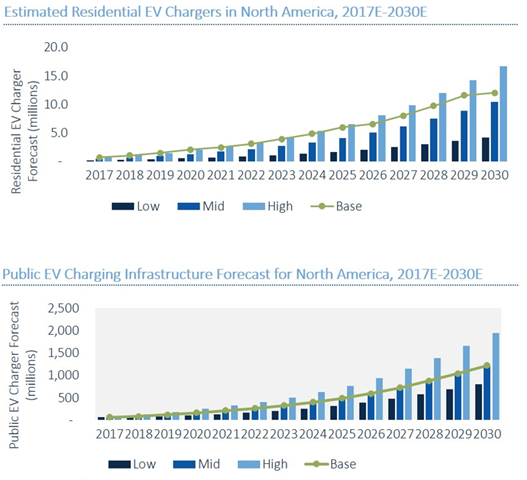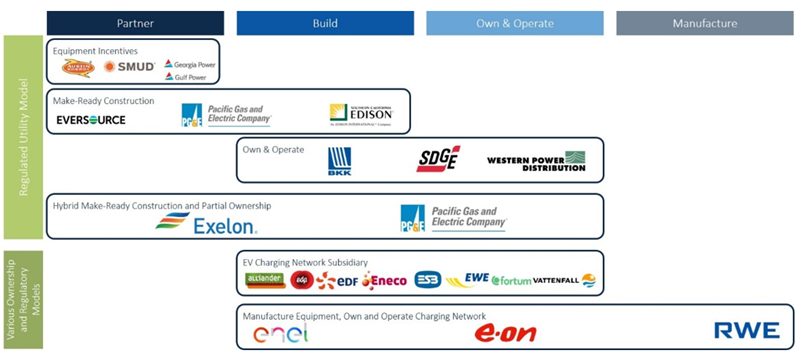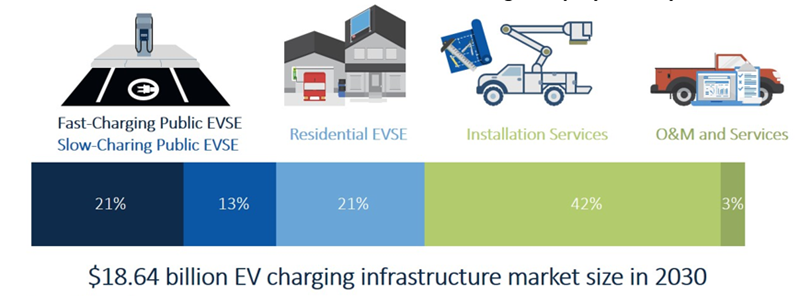Discuss your challenges with our solutions experts
EV growth will require massive charging infrastructure build-out
Stakeholders are scrambling to develop collaborative business models to access multiple streams of spend and revenue
1 minute read
Although electric vehicles (EVs) comprised less than one percent of annual vehicle sales in 2016, falling battery prices, government mandates and incentives, and ride sharing are driving interest and adoption in EVs. In fact, EVs are expected to make up approximately 11 percent of new vehicle sales by 2030. The infrastructure to support widespread EV usage and the subsequent electrification of transportation, like the demand for EVs themselves is still materialising.
Wide-ranging impacts
The change however will be rapid; we estimate that 12 million residential charging points and 1.2 million public charging points will be installed in the North America by 2030. Europe is expected to face similar trends, with estimated 9 million residential and 1.6 million public charging points by 2030. Globally, we anticipate that nearly 40 million EV charging points will be deployed during the same period.
This will push annual energy market transactions in North America, a combination of energy and delivery of grid services, to a combined $13 billion in 2030. To reach this number, utilities, along with manufacturers, oil and gas giants and sector-specific specialists, will need to test new business models and engage new stakeholders to spur construction and bolster ongoing management of EV charging infrastructure.
We've published a new series of market reports focused on the wide-ranging, multi-stakeholder collaborations, case studies, corporate activities and forecasts that comprise the EV charging market landscape.
A complex ecosystem
The EV charging infrastructure ecosystem is very complex, and most projects require strong partnerships between both public and private stakeholders to deploy necessary infrastructure. Critical stakeholder groups in the EV charging market include electric utilities, equipment, software and services vendors, network providers, governments and non-governmental organisations.
A multi-billion dollar opportunity
The growth of the market serving EV infrastructure will accelerate in the years approaching 2030. This will impact suppliers of equipment, installation, analytics and operational services for EV charging infrastructure projects. In North America, this market will total $2.7 billion in just the next two years, and $18.6 billion by 2030, according to the report. The investment is split between physical equipment, and installation, operations and maintenance (O&M) services.
A small, but critical, component of investment lies in O&M and other services that will enable EV chargers to be grid interactive. Bi-directional communications enable EVs to participate in energy markets and distributed energy resource aggregation, making EVs part of the greater connected, distributed energy landscape.
Leveraging EVs in markets and for local resiliency is critical to tapping into potential financial benefits, both charging revenue and grid services. Although opportunities will be slow at first, vendors serving these markets will see opportunities for growth in public charging and grid services grow exponentially,.








